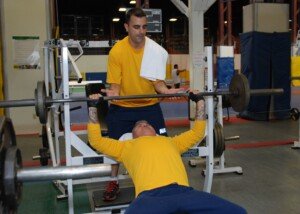
Aortic dilatation, or dilation, refers to an enlarged portion of the aorta, the biggest blood vessel in the body that comes out of the heart.
An aortic aneurysm, or a bulge in a section of the aorta, arises from an enlarged or dilated area.
As the aneurysm grows in size, the inner walls of the aorta at this location become thinner—and hence more prone to rupture or dissection.
“Patients whose ascending aortas are more than 4 centimeters in diameter are generally considered to have dilation,” says Christopher Maroules, MD, in a report. He is chief of cardiothoracic imaging at the Naval Medical Center in Portsmouth, VA.
As the area of dilatation grows, the aortic walls weaken. Think of what happens to the rubber of a balloon that’s being over-filled with air.
Study Shows Former Professional Football Players More Likely to Have Enlarged Ascending Aortas
The ascending portion of the aorta is the section that ascends out of the heart and supplies the coronary arteries.
Dr. Maroules et al was curious as to whether or not years of playing professional football—what with its strenuous nature and highly intense workouts—could lead to aortic dilatation.
• 206 former NFL athletes were compared to 759 controls from the Dallas Heart Study.
• All were older than 40.
• Body mass index exceeded 20.
• Cardiac gated non-contrast CT scanning was used to measure the aortas.
• Calcium scores were taken to get an indication for the presence of heart disease.
• Nearly one-third of the former athletes had aortic diameters exceeding four centimeters.
• Only 8.6 percent of the controls had aortic diameters over four centimeters.
• Age, BMI and cardiac risk factors were adjusted for, and still, the former athletes were twice as likely to have an aorta over four centimeters.
• Heart disease was ruled out as a factor because the calcium scores of both groups were similar.
Risk factors for an aortic aneurysm are smoking, high blood pressure and genetic connective tissue disorders.
So what’s going on?
Is there something about pro football that enlarges the ascending aorta?
Dr. Maroules, in his report, surmises that the strenuous training exercises cause remodeling of the aorta.
Gee, this begs the question: What about other forms of sport for which intense, strenuous training is key?
Football players lift hard and heavy in the gym, and are subjected to grueling workouts on the field, including training against resistance (e.g., pushing sleds loaded with weights).
However, other athletic disciplines also entail highly strenuous exercise, such as CrossFit, strongman, powerlifting, hockey and gymnastics. And even your ordinary gym rat who kills it at the health club.
And if the running component of football, rather than the resistance component, is the chief cause of aortic dilatation, then we must wonder if elite soccer players and sprinters are at risk for aortic enlargement.
“It remains to be seen if this remodeling sets athletes up for problems later in life,” says the report.
Much more research is needed, and surely it will be conducted.













